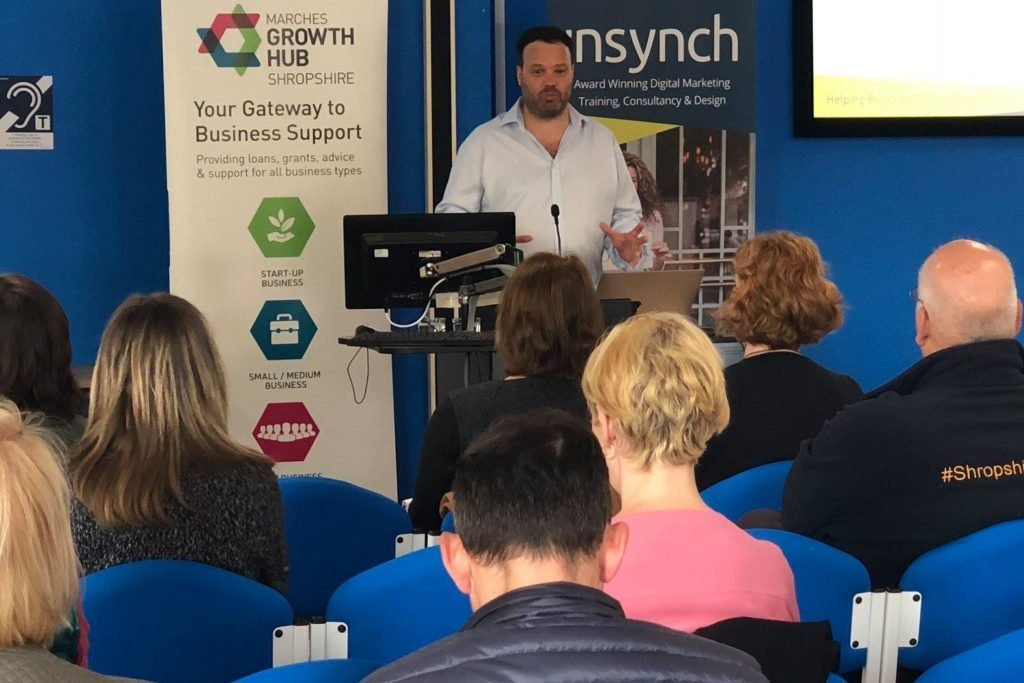Writing blogs as part of your content strategy for your website is a great way to reach new customers, nurture current customers, and highlight services. It is also an essential part of any digital marketing strategy to boosting your organic search rankings. The major downside turning many businesses away from this strategy is that it is time-consuming. Furthermore, it takes time for blog posts to make a tangible impact on your business.
For these reason, many businesses have been turning to ways to cut down the time and money spent on writing blogs. AI content writing tools such as ChatGPT and Copy.ai have taken the news spotlight in 2023 as “game changers” in the content writing spheres. Generative AI technology has progressed to the point where it is able to perform natural language processing tasks given to it. These tools are often marketed as cheaper alternatives to qualified copywriters, appealing to business owners wanting to save time and money.
Previously, we wrote discouraging the use of AI blog writing tools due to several factors. Lack of content quality, readability, and Google’s stance on AI all contributed to our recommendation to not use AI in your content strategies. Since the publication of this article, ChatGPT – currently the most advanced generation tool – became available for public use at low cost. Additionally, Google clarified its stance on the use of AI-Generated content, recognising it as a useful tool for online websites.
Does that mean that the floodgates have opened for businesses and marketing departments to freely use AI blog writing tools? Yes and no. AI can be a great tool to enhance your content strategy, but AI should not fully replace human input and effort.
Circumstances have changed in favour of including AI as part of a content strategy. However, you can still be caught out if you don’t understand the caveats. If you’re going to refresh your content strategy, keep the following factors in mind. If you still have any questions related to content and digital marketing strategies, you can chat with us anytime for a free consultation.
Google’s official stance on AI generated content to date is that they recognise AI and other automations are capable of producing high-quality and informative content. They will not automatically penalise content made by an automated tool, rather than a human. However, Google still analyses content using their SpamBrain and Helpful Content algorithms.
Google’s Algorithms Will Still Devalue AI Generated Content Without Human Input
Update: As of March 2024, Google has published a new update to their algorithms, using new criteria to target content that is “low quality” and provide “no value”. This encompasses the large majority of content where the only input is from AI. Google will go as far as to delist your website or pages if too many pages are written poorly. To say it briefly: Don’t risk using an AI to write all your content for you.
As our blog on content writing practices in 2023 stated, Google’s Helpful Content system is designed to improve the experience of their users. Google wants to ensure users get high quality information written for them. This algorithm penalises bland content made to manipulate search rankings, or misdirect users with incorrect information.
The latest version of ChatGPT is unable to create blogs that 100% pass the helpful content algorithm’s criteria out of the gate. The most sophisticated generative tools can still create redundant paragraphs, produce misinformation, and provide no answers to your user’s most dire questions. Generated articles tend to follow very similar content and grammar structures. If 5 businesses use an AI to write about one topic, these 5 blogs can read very similarly to each other. This can be flagged by Google’s algorithms as plagiarism.
For these reasons, Google is more likely to devalue AI generated content. Blogs and websites need to be factual, readable, and providing unique insight where relevant. If you rely on AI to do all the work for you, then you are unlikely to boost your website’s SEO positively.
AI Writing Tools Saves Time, But Not as You Know It
The most purported benefit of using a tool like ChatGPT is that it saves time, writing legible text much faster than a human can. But if that text needs to be edited to ensure that it is following Google’s guidelines, this negates the time saving benefits. In our experience of content writing, editing an AI generated article to pass as high-quality is more time-consuming than editing one made by a professional writer. Competent content writers are already doing their best to adhere to the best writing and SEO practices.
AI’s true time saving benefits are for writers struggling to think of connecting sentences or progressive structures for articles. You can easily prevent writer’s block by asking AI for input when you are stuck. ChatGPT can even assist with brainstorming ideas for new articles, significantly cutting down time spent on research and strategy. The following request is one you can use when brainstorming a content strategy:
Please generate 10 blog ideas for this website https://insynch.co.uk
If you have written something and feel it isn’t worded in the way you want, use a rewording request to see what the AI suggests. AI can rewrite anything from simple sentences to entire paragraphs. This is useful when rewriting content for different platforms, such as Twitter where your character count is limited. You can refine the command further by telling the AI the specific end result you want, for example:
Please rewrite this sentence to be under 140 characters long / Please rewrite this paragraph to be more positive
The Technological and Political Landscape of AI Writing is Constantly Changing
As you may already know, what makes generative AI so powerful is their ability to learn and improve. These machines are constantly seeking out new writing and data to refine their intelligence, and require massive pools of data in order to achieve this. As the technology progresses, we may see further improvements to how AI processes and understands information, mitigating some of the con’s discussed in this article. On the other hand, we may also see the opposite happening and changes dictating how we may use AI in the future.
The legal landscape of AI is currently in it’s “Wild West” stage, with developments happening every day. Legislation is being drafted to regulate the usage of AI in several countries, and copyright-related lawsuits are being issued to companies in charge of developing generative AI. Furthermore, data centres housing AI use significant amounts of energy to run, prompting calls for environmental legislation.
How This May Affect Your Usage of AI in a Content Strategy
Currently, AI tools are cheap or operate on a freemium pricing strategy, making them affordable and accessible tools for businesses to use. However, we may see significant changes in how AI tools are priced as a result of legal regulations and challenges. Generative AI may also become less effective at generating useful content if it is ordered to remove data involved in legal disputes.
Update: In August 2023 a US district court judge ruled that content generated by AI cannot be protected by copyright. Keep this in mind if you plan to use AI for generation of website content and assets. In March 2024 the EU has passed their Artificial Intelligence Act which will come into force by 2026. This may affect you if you plan to do business in or with the EU with/using products or services that rely on AI (e.g. website chatbots).
In conclusion, the current generation of generative AI writing tools offers many benefits for businesses looking to improve their content strategy. These are powerful tools that can help save time and enhance one’s writing capabilities to new levels. However, we have also discussed the risks of relying on these tools, and what you need to be aware of should you choose to start using AI.
To summarise, here are the 5 dos and don’ts of using AI in your blog content strategy:
DO Appraise the Quality of the AI Tool
Tech companies talk big about how AI can save you time and money, but fail to produce the quality you require. In the end, they will only waste time and money in the end. Before subscribing to a particular tool, or signing up for the free version of a tool, research it and appraise the quality of content it generates. Often, you will have to pay more for better quality AI.
DON’T Replace Content Writers With AI
This is a corner that should never be cut, as Google will penalise articles for misinformation, plagiarism, low quality, and other elements in its algorithm that detect bad SEO practices. AI is best used to supplement the efforts of your content writers, not substitute them.
DO Fact Check Every Statement
AI processes and understands language in a very different manner to how a human does. As a result, they can suffer “delusions” when generating, and easily make incorrect statements or cite sources that aren’t real. This can land you in trouble with the law and with Google. Don’t ask the tool to prove what it said is true either, as the AI can stick with the “delusion”, and generate more misinformation.
DON’t Forget Your Brand’s Unique Voice
Your blog is a vital part of the experience you deliver to your visitors and customers. The topics and points written on your blog should do their best to sell your expertise and services to potential customers. If your brand is committed to sustainability or another aspiring goal, let customers know. If there is a reason why customers should go to you and not a rival company, spell it out. AI generated content will often misunderstand your brand and your unique voice, and you should not let that be sacrificed in order to save time.





